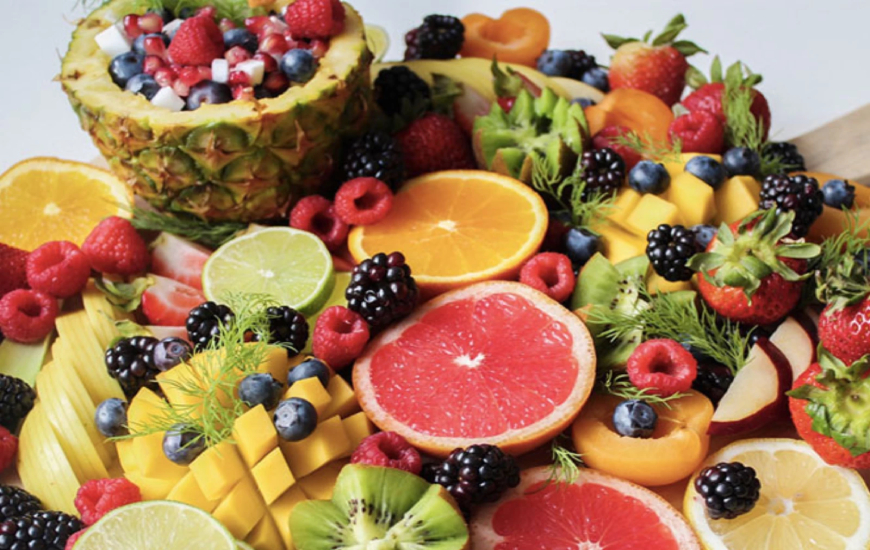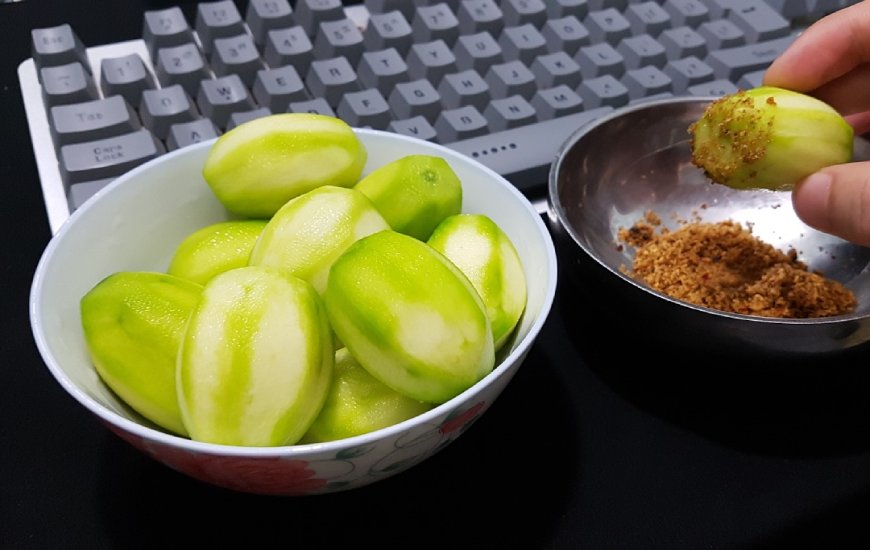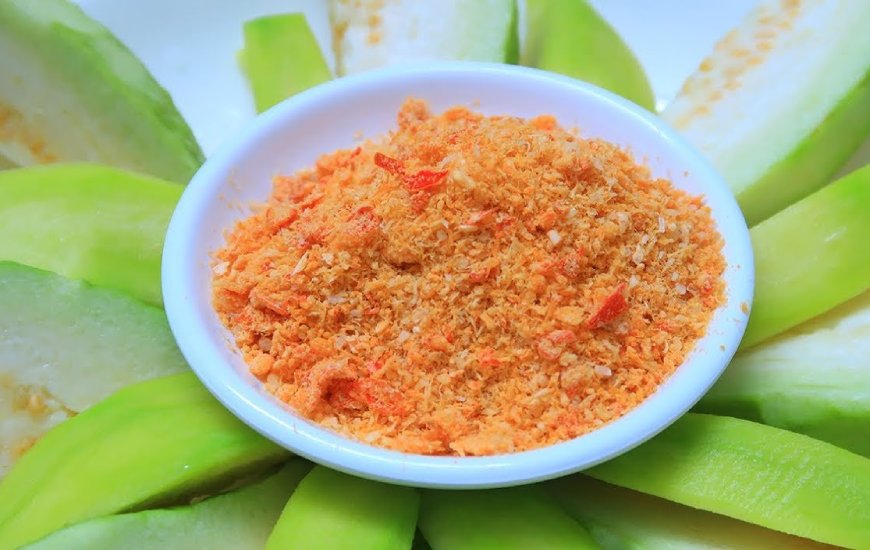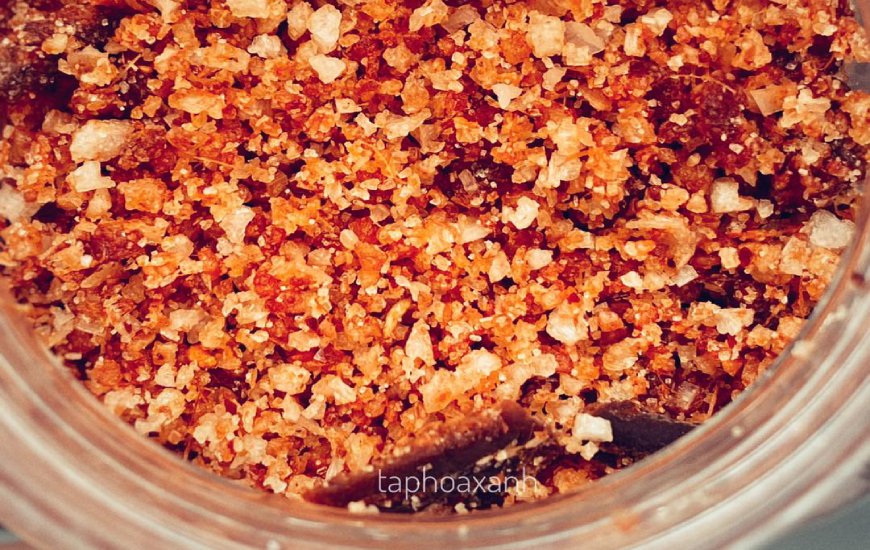Need Help?
Oct 3, 2023
By Ms. Minh Thu
Vietnam is known as the paradise of food because Vietnamese dishes are not only delectable but also reap and easy to find. However, there are some eating habits of Vietnamese that people from other parts consider strange, including eating fruits with salt. Questions like Why do Vietnamese eat fruits with salt?, is a frequently asked question by newbies who have come to Vietnam for the first time. So today, the Best Vietnam Tour Operator will give you the reasons why Vietnamese people have this eating habit.
As a tropical country, especially in the Southwest region, a rich land with year-round fruit orchards, Vietnam possesses many types of fruits that few countries have. Vietnam is a country with a high diversity of agricultural products and nutritional sources from agricultural products. Because the S-shaped country is blessed by nature with a rich flora and favorable weather for fruit tree varieties to grow well. Some fruits of Vietnam such as longans, dragon fruits, mango, lychees, rambutans,... are exported to many strict markets such as the USA, Japan, EU, New Zealand,...

This way of eating ensures a yin-yang balance in food
This is the driving idea, which is seen to be advantageous if applied to all areas of life, not only eating. Yin-yang balance is employed to produce food that has a medium taste, is aesthetically pleasing, and is healthy for customers. Regarding eating fruits with salt, fruits, with the sourness and sweetness, presenting yin, needed to be combined with salt, presenting yang, to make a balanced combination. In contrast, eating fruits with sugar or yogurt, which creates a double of yin, is not balanced. This principle is also applied in many other Vietnamese dishes.
This way of eating is the perfect combination of taste
Vietnamese people often dip slices of fruits into a salt bowl simply because it is tastier. Simply told, salt is an excellent flavor enhancer and balancer. Salt acts as a buffer between bitterness and acidity. As bitterness prevents sweetness, salt aids in bringing sweetness to the surface while decreasing your capacity to detect it. Unripe mangos and other sour fruits benefit from the flavor and sweetness that salt adds to them.
You find this fruit eating style strange because you have never eaten this way. But if you try one time, then you can understand why this eating habit is popular in Vietnam. Many Vietnamese people even joke that eating mango in the absence of salt is such a soulless dish. In other words, in Vietnamese opinions, salt is a must.
Many people from other countries have been "addicted" to this snack when they have a chance to try it. Of course, they must be oldbies in Vietnam, who have partially or completely merged into Vietnamese culture. For example, Jungrak is a famous TikToker and YouTuber from Korea. With his profound understanding of Vietnam, which is even better than some Vietnamese, he is also a foreigner who fancies eating fruits with salt. Bill is another famous name from France in the Tiktok community. He made funny videos about Vietnamese food, including eating fruits with "Hao Hao" soup powder, a kind of salt popular in Vietnam.
Fruits which are often eaten in this way should be unripe, or underripe, so that the taste is not too sweet and the texture is crunchy. Below are some kinds of fruits which are often eaten with salt.
Unripe mango
Unripe mango is perhaps the most common fruit which is often enjoyed with salt. The taste of unripe mango is not that complex: a little sour, a little sweet, unstrong aroma, and super crunchy. The pulp’s color ranges from light green, white to light yellow, signifying the state of being underripe. If you downright like sour stuff, baby mangoes may be what you need. You just need to peel, core and chop mangoes into slices to dip them in salt or into cubes to shake them with salt, then you will have a great snack for a movie or chatting time with friends. If you don’t have mangoes at home, you can look for a stall along the roadside. There are tons of stalls like this on Vietnam’s streets. Remember to buy a box of mixed rice paper, and a cup of iced kumquat tea, because this is a popular combo among the Vietnamese youngsters.

Unripe ambarella
Ambarella is rarely seen to be eaten when it is ripe. Similar to unripe ambarella, underripe ambarella is also a common fruit eaten with salt. The pulp, whose sourness exceeds sweetness, does not have any unique aroma and is super crunchy, completely suitable to make fruit snacks. You can buy and make it yourself, according to the recipe similar to mangoes. Or respectively, you can buy at stalls.

Plums
Don’t be deceived by its mouth-watering red and purple skin, because plums is a kind of fruit that is sour even when it gets ripe. So eating with salt is a reasonable combination. You can easily find this fruit in summer - the plum season. Similar to mangoes or ambarella, vendors also sell this fruit in boxes.

Guavas
Guava has a light sweetness, so without salt, the taste is kinda bland. Unripe guavas are even acrid to eat so salt will help reduce the acridness and boost the sweetness in this kind of fruit.

In addition, pomeloes, pineapples, star fruits,... are not bad choices.
You should keep in mind that salt that is usually eaten with fruits is not pure, crystal-white, and very salty. Salt is mixed with many other spices and ingredients to be tasty. There are many ways to prepare salt, you can take these recipes below into account when you crave for this special snack.
Salt with garlic and chili
You need to prepare salt, garlic, chili, sugar, black pepper, and a frying pan. Peel the garlic thoroughly, then put the garlic and chili in a bowl. You can pure it with a blender or use a mortar and pestle. Then add chili pepper, minced garlic, pepper and soup salt, and mix well. Wait until the pan is really hot, then slowly add the above mixture, using a spoon to stir well. Be sure to keep the fire at medium level. When the salt starts to dry a bit, add sugar and mix well. The salt will begin to turn pale pink and then form into blocks. At this point, turn off the stove, take the pan down and use a mortar to grind up the salt. Continue placing it on the stove a second time to add dry salt. You can put it in a jar to preserve and eat later.

Salt with shrimp
You need to prepare dried shrimps, salt, chili, chili powder and pepper. Soak shrimp in cold water, then puree with chili and garlic. Pour the above mixture into a bowl, continue to add soup powder, pepper and mix well. With medium heat, roast the above mixture until bright pink and dry. Before putting it in the jar, you can use a mortar to crush it so that the salt does not clump and looks more delicious. Be sure to place a piece of paper at the bottom of the jar to keep the salt from leaking.

Salt with O Mai (salted dried fruits)
The recipe is not too complicated. You just need salt, O mai, sugar and fresh chili. Separate the flesh from the apricot O Mai, remove the seeds and slice the chili. Put the apricot O Mai pulp and chili into the jar of a blender along with 30ml of water to puree. Put the ground apricot O Mai mixture into the pot and boil for about 5 minutes, then let it cool so that the apricot absorbs the water. Add fine salt to a non-stick pan and roast until dry over low heat. Add sugar and apricot O Mai water mixture and cook over low heat. Stir well until the water evaporates and the mixture becomes thick. When the mixture has reduced the water, lower the heat and stir until the salt particles crystallize and dry. Turn off the stove and let the salt cool and then put it in a jar for later use.

Or respectively, you can buy processed salt to eat with fruits. There are some famous brands you can refer to such as Tay Ninh shrimp salt, Hao Hao soup powder (which was originally produced to add in instant noodles),... These brands are both famous and popular in Vietnam.
So now you understand why Vietnamese people like eating fruits with salt, don’t you? But you should bear in mind that, in-question salt is not common salt, but special salts that accompany fruits well. If you have a chance to visit Vietnam, you should try this snack in the street to truly merge into Vietnamese cuisine in particular and Vietnamese culture in general.